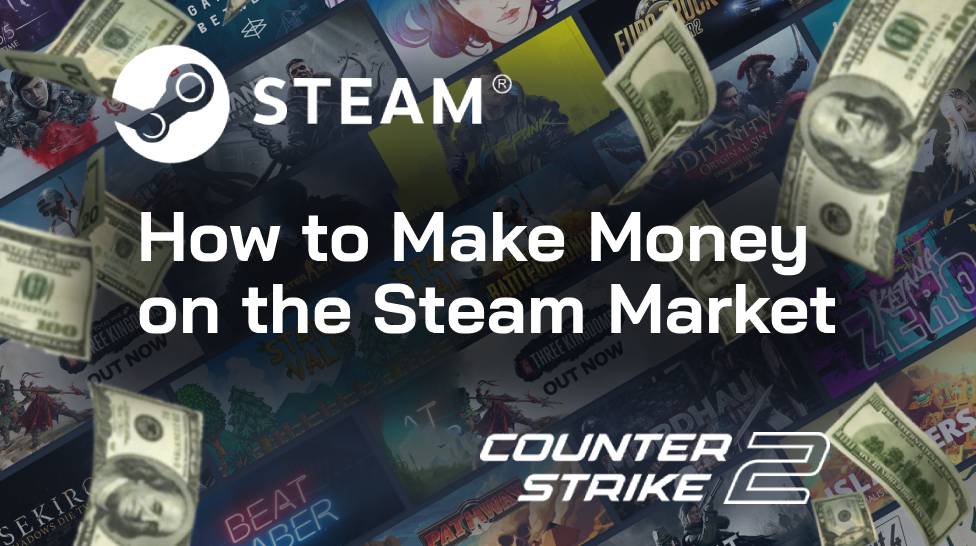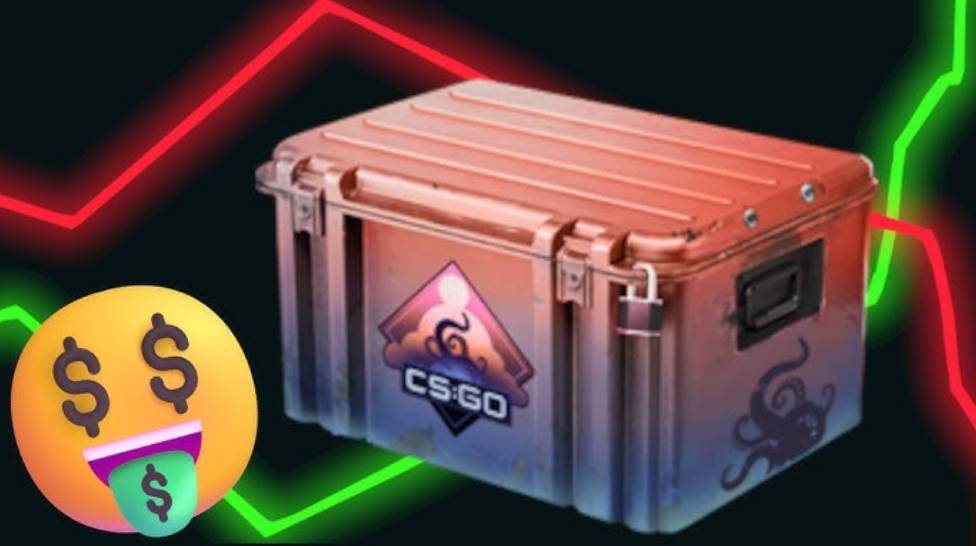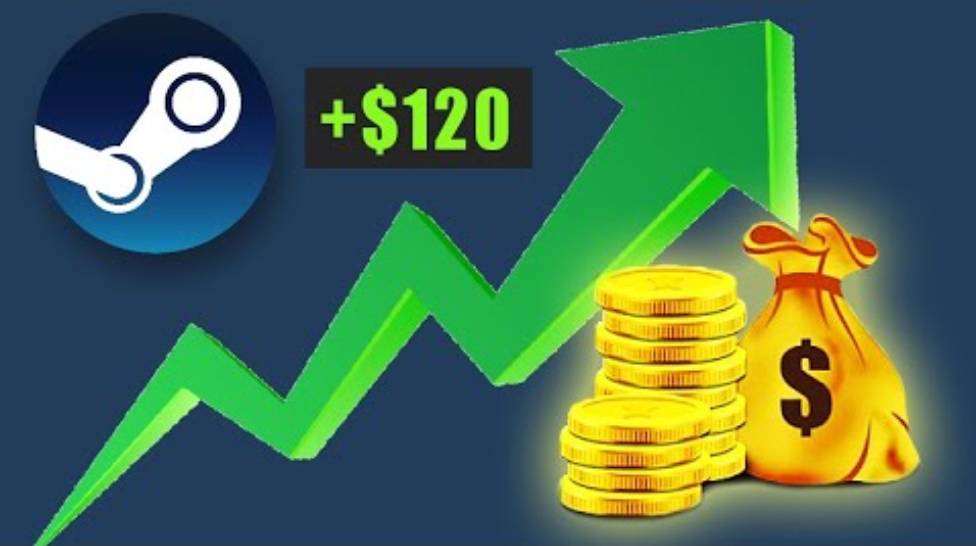The key is understanding how the Steam Market behaves. It’s not a stock exchange, but a player-driven micro-economy where hype, scarcity, and game updates matter more than charts alone.
This page breaks down legit earning methods that stay within Valve’s Terms of Service, how value is created, tools that help, and the risks many overlook.
Where do Profits Come From?
Steam Market profit isn’t magic. It’s about timing the community’s interest curve.
Demand Cycles
Every skin, sticker, or case goes through waves. A major event, like an Operation or tournament, can send demand and prices spiking.
When Operation Shattered Web launched, case prices jumped within days because the drop pool changed. Then, months later, they cooled off.
That cycle repeats:
- Hype → Overbuy → Correction → Scarcity rebound.
Smart traders learn the rhythm.
Case Hype & Patch Announcements
Whenever CS2 adds a new case or map update, older content temporarily gains or loses value.
Example: When the CS2 transition happened, CS:GO weapon cases became semi-legacy items. Players hoarded them, anticipating rarity, and prices surged.
This shows how psychology drives the market, not just the item’s look, but its story.
Seasonal Factors
- Winter and summer sales increase buying activity.
- After big esports tournaments, sticker capsules often see spikes.
- When a case stops dropping, collectors rush in, especially if a streamer mentions it.
If you want to make informed moves, data is everything. Thankfully, Valve gives you a few official and ToS-compliant tools.
Steam’s Own Graphs
Every item page on the Community Market shows a price history graph. That’s your baseline. It updates daily and shows:
- Average sale prices.
- Volume (number sold).
- Seasonal spikes.
You can spot patterns by zooming out over 6–12 months.
Bookmark External Trackers (ToS-Safe)
You’re allowed to use public analytics sites that read Steam’s own API data, like:
- SteamAnalyst.
- CSFloat Market Data.
- Buff.163 (for comparative trends).
These don’t automate trades. They just display public info, so they stay ToS-compliant.
Price Alerts
Some browser extensions or bots help you track changes, not execute trades. There is no automation, just alerts.
For example, if a case hits a certain threshold (say, $1.50 → $2.00), you’ll know to re-evaluate your listing.
Reading Volume
High prices mean nothing if volume is thin. Look at how many sell daily. If it’s under 100 per day, your liquidity risk or time to sell is high.
Risk Management
Even small fees can erase small profits. Steam takes 15% total (10% game + 5% platform), so if you’re flipping a $2 skin, your breakeven point is $2.30+.
Common risks and their mitigation methods can be summarized in the table below:
| Risk | Description | Mitigation |
| Fees | 15% cut per sale | Always calculate net returns before listing |
| Slippage | Rapid price movement | Avoid volatile items post-patch |
| Liquidity | Slow-selling items trap funds | Focus on high-volume cases/stickers |
| Impulse buys | Emotional trading | Use alerts and cool-downs |
| Market holds | 7-day delays on trades/sales | Factor in timing before events |
Tax and Compliance Considerations
Let’s be clear: This isn’t tax advice. Nonetheless, understanding the basics helps you stay compliant and safe.
Steam Wallet ≠ Cash Account
Your Steam Wallet balance isn’t withdrawable. It’s digital store credit, meaning you can’t directly “cash out” without breaking ToS.
Tax Implications
Most players don’t owe taxes since wallet funds aren’t real income. If you operate at scale, say, running a secondary resale business, your local laws may apply.
Some regions even consider digital asset trading taxable once converted to real currency, e.g., through third-party platforms, which Valve forbids.
What Valve Says
Valve’s Steam Subscriber Agreement makes it clear: Market items are licensed content, not owned assets. That’s why monetization is limited to in-platform use.
So, you can build value, trade items, and play the market, but not withdraw. Keep it inside Steam, and you’re fine.
What NOT to Do
To stay ToS-safe, avoid anything that even looks like external cash conversion.
Third-Party Cashouts
Sites that promise to “cash out” your Steam balance violate ToS. Valve regularly bans accounts tied to suspicious trade patterns.
Manipulative Listings
Coordinating fake listings or using alternate accounts to inflate prices is a ban risk.
Valve tracks linked wallets and IPs, so it’s not worth it.
Automation and Scripts
Auto-buying or selling tools crosses the line into unauthorized automation. Even if they claim to be “safe,” they violate Valve’s API terms.
Price Manipulation Myths
Some think buying a full page of cheap listings and re-listing higher equals “easy profit.”
In reality, others undercut within minutes. Without real liquidity or volume, those listings collapse instantly.
Too-Good-To-Be-True Offers
If a “friend” wants to “help you move items faster,” double-check everything. Here are common scam patterns:
- Asking for trade confirmations outside Steam.
- Sharing fake verification sites.
- Offering “sponsorship deals” for skins.
Always confirm trades in the Steam overlay. Never through Discord or email.
Common Steam Market Earning Approaches
Below is a summative table to highlight common Steam earning approaches:
| Strategy | Data Needed | Typical Margin | Risk Level | ToS-Safe? |
| Case Holding | Drop pool data, patch watch | 20–100% over months | Medium | Yes |
| Sticker Speculation | Tournament timeline | 10–50% | High | Yes |
| Skin Flipping | Price history, volume | 5–15% | Medium | Yes |
| Patch Hype Buys | Developer news feed | 10–40% | High | Yes |
| Automation Trading | API access, bots | 100%+ (short-term) | Extreme | No |
| Cashout Resales | Third-party site access | Variable | Extreme | No |
Wrapping Up
You can make money on the Steam Market, just not in the traditional sense. You’re growing in-platform value, trading hype cycles, and learning market behavior all without risking bans or breaching ToS.
Stick to transparent tools, track demand cycles, and view profits in Steam Wallet value rather than real currency. That mindset keeps your account safe, your wallet healthy, and your gameplay funded.
FAQ
- Can you actually make money on the Steam Market?
Yes, but only in the form of Steam Wallet balance, not withdrawable cash. It’s best viewed as value building, not real-world income. - Is flipping skins allowed?
Yes, as long as it’s manual, done inside the Steam Community Market, and within the ToS. Automated or external trading is forbidden. - How much can you realistically earn?
Small, steady gains. Most active traders average 5–20% margins on mid-tier items. Big spikes usually come from case discontinuations or patch hype. - What’s the time cost?
Moderate. Monitoring listings and patch notes regularly is key. It’s closer to a hobbyist’s side activity than a full-time income stream. - What if a sale fails or holds too long?
- Steam sometimes delays or reverses trades due to market holds, bans, or verification issues. Always double-check your listing status under “My Active Listings.”
CS2 Gambling
CS2 Skin Trading
Rust Gambling
Promo Codes
Online Casinos
Crypto Casinos
CyberSport Feed













![Mastering the Jumpthrow Bind in CS2: Guide for [year] Mastering the Jumpthrow Bind in CS2: Guide for [year]](/imgs/news_8184/20250403/cache/1743689035_437c3a5edc5234b6e222___308_174.jpg)
